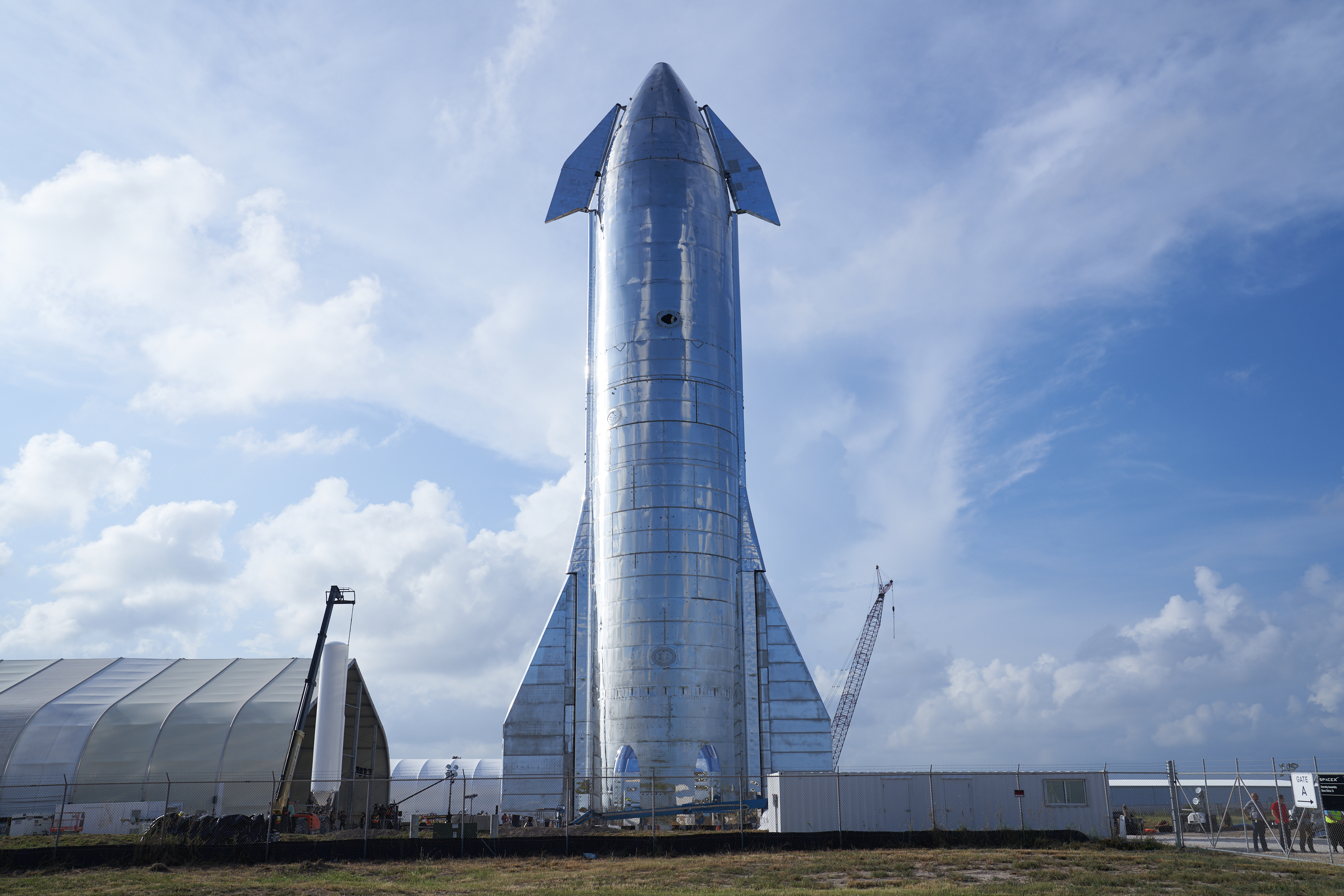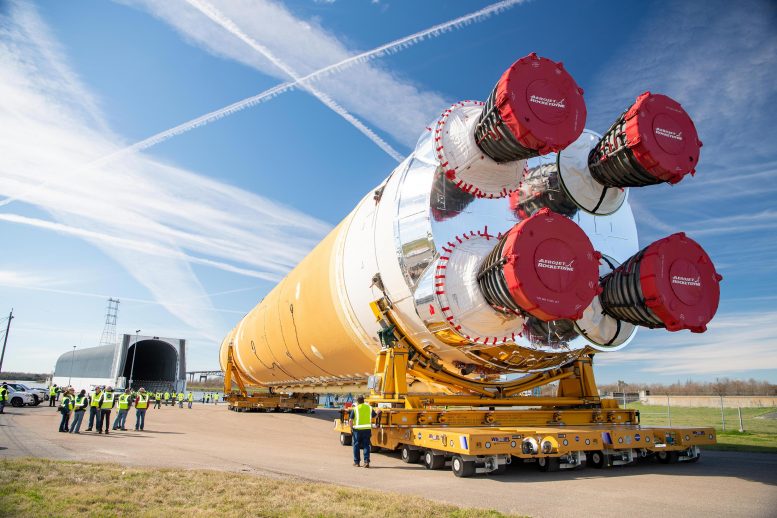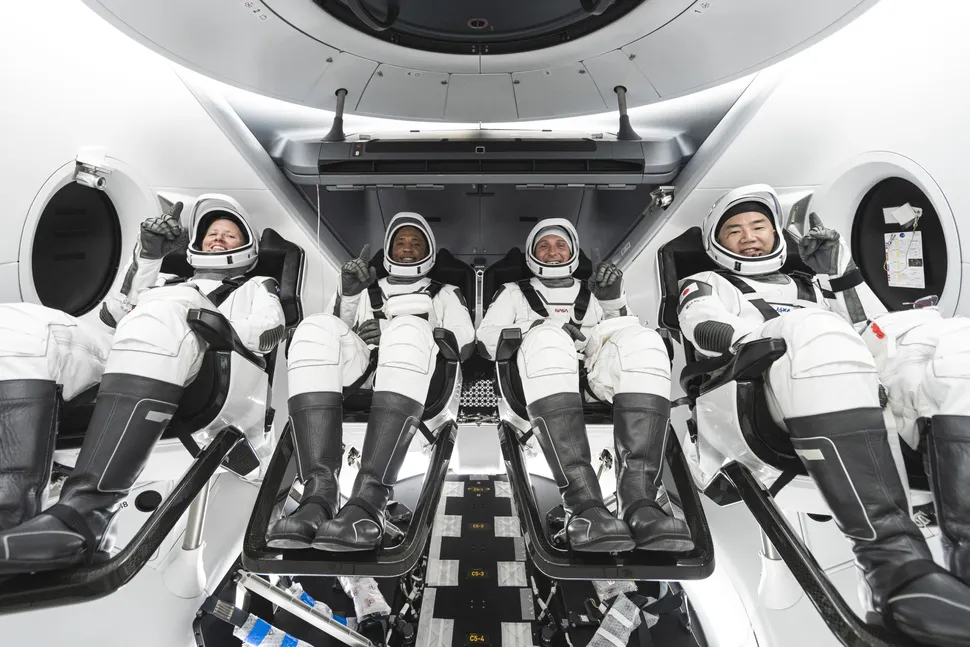2021, another Space Odyssey
21/1/21 12:30
Mars, here we come! Those are Elon Musk's words from a tweet in December when he launched the first (almost successful) Starship flight. Humanity's most powerful rocket ever, the start of a new stage in the space race, triggered by innovation in the private sector. Now that the countries and companies have gradually started adapting to the Covid realities, 2021 is about to become a tipping point in space flight beyond Earth's atmosphere.
The next 12 months will probably be a hectic time in space, as we're likely to witness the privatization of near-Earth orbit. Near space will be saturated with spacecraft from new companies who'll build small rockets solely through private investment. The big players in the sector and the national space agencies will in turn redirect their efforts to larger and bolder undertakings, directed at Moon and deeper space, like Mars, Venus and the asteroid belt. But we'll be needing new, more powerful rockets for that. 2021 is expected to give us at least 4 or 5 of those: Starship of SpaceX, SLS of NASA, Vulcan of ULA, the Russian Angara 5A, and probably also New Glenn of Blue Origin, Bezos' space company.
The big hit is undoubtedly shaping up to be Starship, whose development and evolution could be followed almost in real time on the social networks. Musk's super-heavy spacecraft successfully reached 12.5 km height, and it's expected to pass the 100 km barrier called Karman's Line in the next months, and nominally enter space. Along with its Super Heavy carrier rocket, it'll be twice as powerful as the legendary lunar Saturn V rocket, and be able to carry at least 100 tons of cargo into orbit. One day it'll be able to bring up to 100 astronauts to Mars. If things go well for SpaceX, next year the Starship prototype could reach Earth orbit, and then try to land back (protected by a heat shield), becoming the third multi-use spacecraft after the US space shuttles and their Soviet clone, Buran.
If all of these plans come true, Musk's space company will get to the next phase of its ambitious plans, and start experimenting with orbital re-fueling, something no one has done so far. This technology is key for deep space missions, since all existing rockets almost entirely spend their fuel for just overcoming Earth's gravity and reaching low-Earth orbit. SpaceX will also start preparation for developing an experimental Moon landing (they've got a grant from NASA for developing a lunar landing module, currently a modified version of the Starship), and then the possible sending of the first test missions to Mars in 2022 (a comfortable window for flight to Mars will open there, due to the planet's proximity to Earth at that moment).

2021 will also be crucial for NASA. They're expected to complete their super-heavy (and super-expensive) SLS carrier rocket, the official successor to Saturn V, supposedly the backbone of the new piloted lunar program Artemis. NASA will have to demonstrate that the tens of billions of dollars of taxpayer money hasn't gone in vain.
NASA is planning the inauguration flight of SLS by the end of the year, which will launch the Orion unmanned capsule into lunar orbit, and then test its return to Earth after using the Moon for a slingshot acceleration. The agency will have to decide what to do with the moon-landing module (currently Congress is denying the requested 3.2 billion dollars), and choose which companies will carry on with the project.

Also, NASA will test its first Martian helicopter drone early this year, called Ingenuity, and in autumn, in collaboration with the European Space Agency, will launch the future most powerful orbital telescope, James Webb, a historic moment for astronomy.

Crucially, 2021 is expected to be the year when the established space juggernauts that have been relying on government grants worth billions of dollars, to have their oligopoly threatened by the multi-use spacecraft like SpaceX, and the increasing array of new space start-ups that are about to bring space business into the world of market economy. The giants themselves will not go down without a fight, though. For instance, the United Launch Alliance (ULA) that's been dominating the landscape until now, is expected to launch its Vulcan module rocket. We'll see if it can compete with established technology like Falcon 9 and Falcon Heavy (SpaceX creations), and if it'll manage to integrate multi-use technology like they have (ULA's initial idea was for the engine section to land through an inflatable heat shield and a parachute system).
A useful vid on the subject:
https://www.youtube.com/watch?v=KA69Oh3_obY
The European space giant ArianeGroup has joined the fray as well, they'll try to complete their Ariane 6 module rocket. And though it's a more cost-orientated version of the current version Ariane 5, it'll hardly be competitive to the multi-use rockets of SpaceX, let alone the Starship version of the near future. ArianeGroup will possibly try to test their Themis prototype, a multi-use rocket copy-pasted from SpaceX's Falcon 9. In the meantime, the ESA will start developing an automatic multi-use orbital plane called Space Rider that'll resemble the US military drone X-37.
China, in turn, is planning to start building its first 60 ton module space station, which will resemble the Russian station Mir in terms of size. They're planning to launch its central segment this year. It'll contain the living section for three astronauts, life support systems, the energy component and the engines, and it'll be pinned in orbit by stabilizing its trajectory to compensate for Earth's gravity. The Chinese orbital complex is expected to be functional at least for 10 years, once it's complete in 2022 or the year after.
China's regional rival, India also has space ambitions of its own. They'll do maximum effort this year to launch the final prototype of a unmanned spacecraft that's planned to become manned. India is hoping to become the 4th space power to launch humans into orbit, after Russia, the US and China. By joining the Artemis lunar program, Canada is also hoping to become the 2nd country after the US to send an astronaut into deeper space. This will probably happen in 2023 at the earliest, when the Artemis 2 mission is scheduled, including a flight around the Moon (without landing).

In 2021, private business and market competition will start flourishing in near-Earth orbit. The Russian space agency Roskosmos will say goodbye to its lucrative monopoly in the transportation of astronauts to the ISS, which has been disrupted by SpaceX in recent months through their piloted capsule, Crew Dragon. Musk's company will keep servicing the cargo shipment to the orbital complex thanks to the updated version of their Cargo Dragon spacecraft. The CST-100 Starliner capsule by Boeing is also expected to re-join the race with a unmanned test flight to the ISS in march. If it's executed without anomalies, unlike in 2019, that'll open the path to launching the first experimental crew by the end of the year.
Let's not forget space tourism. 2021 will be a tipping point for that, too. The first private sub-orbital passenger flights of Branson's Virgin Galactic are expected to launch in the next few months, and possibly Blue Origin's rocket New Shepard. The Axiom company is at the brink of a major breakthrough, and will organize its first entirely private space expedition to the ISS in autumn, using SpaceX's Crew Dragon. Private space veteran Michael Lopez-Alegria will be on board, as well as Israeli military pilot Eytan Stibbe (the second Israeli astronaut; the first one Ilan Ramon was killed aboard the exploding Columbia shuttle) - and, surprise-surprise, actor Tom Cruise as well! He's planning to shoot the first movie in real space. In the near future, Axiom is planning to integrate private modules to the ISS, which cold one day sprout separate space stations in their own right. Of course that won't be a precedent - even at the moment the ISS has an experimental inflatable segment of the private space company Bigelow Aerospace attached to it.
Private business will quickly and cheaply be bringing small satellites into space. That market is currently being dominated by Rocket Lab, a New Zealand start-up. This segment is about to become much more competitive, and fast. This year will see the race of the smaller rockets being joined by at least tow new players, Firefly Aerospace and Astra, and possibly Virgin Orbit as well, with its LauncherOne, which will be launched from a modified Boeing 747 named the Cosmic Girl. The Relativity Space start-up is successfully amassing millions of dollars for the development of its Terran 1 rocket, which will be almost entirely printed by huge 3D printers. Rocket Lab, in turn, is expected to complete work on a modified version of the Electron rockets, so it could be re-fashioned for a multi-use purpose just like SpaceX's Falcon 9 was. the company is also developing a small rocket called Proton, designed for space flight beyond Earth's orbit - to the Moon and possibly to Venus by 2023. So, even deep space flight will soon cease to be solely the monopoly of the giants in the business.